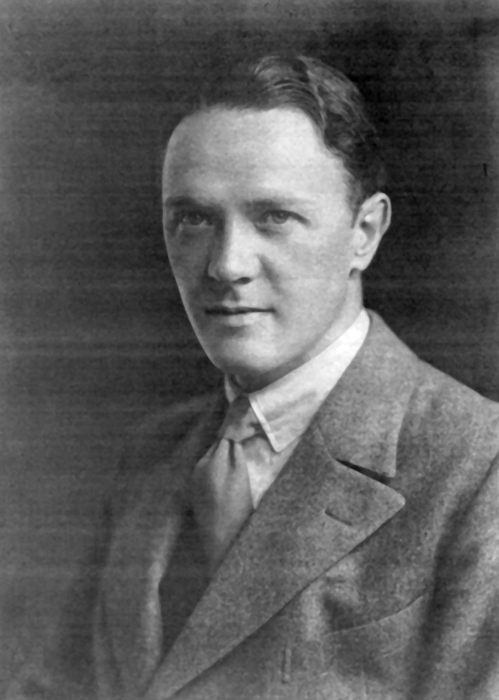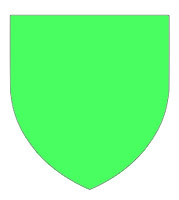| Professors of Natural Philosophy at the Universities of Aberdeen |
Sir John Anthony Carroll FRSE FRAS 8 January 1899 – 2 May 1974John Carroll may have known his predecessor G P Thomson before either of them came to Aberdeen, for they both worked at RAE Farnborough on aircraft research and development at the end of the First World War. They independently went to Cambridge, where Carroll took up his undergraduate scholarship at Sidney Sussex while Thomson took up a Fellowship. In due courseDetails of his early life can be found in "Obituaries: John Anthony Carroll" Quarterly Journal of the Royal Astronomical Society 1975, vol. 16 pp 100 - 103.and also in his RSE obiituary. Carroll, too became a research Fellow of his College and studied at Imperial College, before spending almost two years in the States at CalTech with Robert Millikan and at the Mount Wilson Observatory (with Adams and Michelson). Solar physics was his interest and with his PhD in spectroscopy he was appointed Assistant Director of the Solar Physics Observatory at Cambridge and then Lecturer in Astrophysics. At Aberdeen, Carroll inherited the first-class workshop staff under C G Fraser that had been central to G P Thomson's Nobel work. He made good use of them, in particular developing instruments to measure the spectra and motion of the solar corona. His coronal interests saw him on four solar eclipse expeditions, to California, Norway, Malaya and Canada before organising an expeditionSee J. A. Carroll "The Total Solar Eclipse of June 19 1936", Nature, August 29, 1936, pp 349 - 352 and also for some more personal details Aberdeen University Review, vol. 25, Nov. 1937. pp 14 - 25 "Solar Eclipse, 1936: Aberdeen Expedition". from the Department in 1936 to eastern Siberia. It was a major undertaking. Fraser and his staff had made a novel echelon spectrograph that Carroll took to Omsk, along with other instruments made to his designs. Carroll's eclipse work ended in tragedy when the final expedition to Brazil that he helped organise in 1947, after he had left Aberdeen, was involved in a fatal plane crash. Two staff were killed and much of his equipment lost. Carroll inherited the significant teaching load of his predecessor but he also inherited A E M Geddes as lecturer to provide continuity. Geddes had been appointed first as Assistant in 1909. His speciality was meteorologyHis excellent book appeared in 1921: A E M Geddes "Meteorology; an Introductory Treatise", Blackie & Son Ltd., London, 1921. which he pursued from the fully operational Cromwell Tower observatory along with the official observer, G A Clarke. Geddes would act as interim Head of Department in Carroll's absence during the war. Unfortunately the equally competent Wm Fyvie who had been first appointed in 1907 had died in 1928 in his early 40s. Carroll re-organised the teaching and the Department, served as Dean of Science and, as a future University Principal commented, he was deservedly popular with his own staff and with his fellow Professors. Carroll appeared to be well set on an astronomical career for he served on the Council of the Royal Astronomical Society three times during his Aberdeen tenure, elected a Fellow of the Royal Society of Edinburgh in 1931 and served as President of the International Union of Astronomy Commission 9 (Instruments) for a decade from 1938. However, at the beginning of the war Carroll initiated six-month Radio Training courses and radar training that attracted the attention of The Admiralty. He was invited, or maybe seconded, to become the Assistant Director of Scientific Research. Perhaps it was his experience with mechanical calculators that he had introduced in Aberdeen in the 1930s that resulted in him co-initiating and running the Admiralty Computing Service which morphed into the National Physical Laboratory Mathematics Division after the war. Carroll returned briefly after the war but decided to stay with The Admiralty and he relinquished his Chair in 1946. Like G P Thomson, he was knighted after he left Aberdeen for his contributions to defence. Further detailsSee also a 30 page booklet by his daughter "John Carroll; an Appreciation of his work by Linda Heath", March 2000 of his career are in The Scientific Tourist pages. 
John Carroll in 1930 from a photograph in the scientific instrument collection of the University of Aberdeen, donated by his daughter Mrs Heath. Mr Luck, an assistant on the 1936 eclipse expedition, wrote "Carroll is a splendid leader, a hard worker and the most versatile man I've come across. He is mathematician, astronomer, surveyor, carpenter, plumber, chemist, electrician, and bricklayer. He does everything and does it well. He can dislodge a particularly obstinate three-inch screw from a wooden case with as much deftness as he can adjust the theodolite for vertical and horizontal collimation." |
|
Page by John S. Reid Dec. 2017 |


